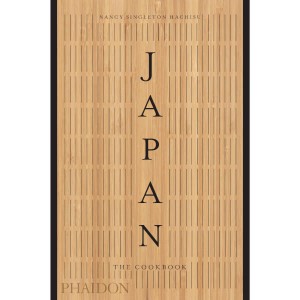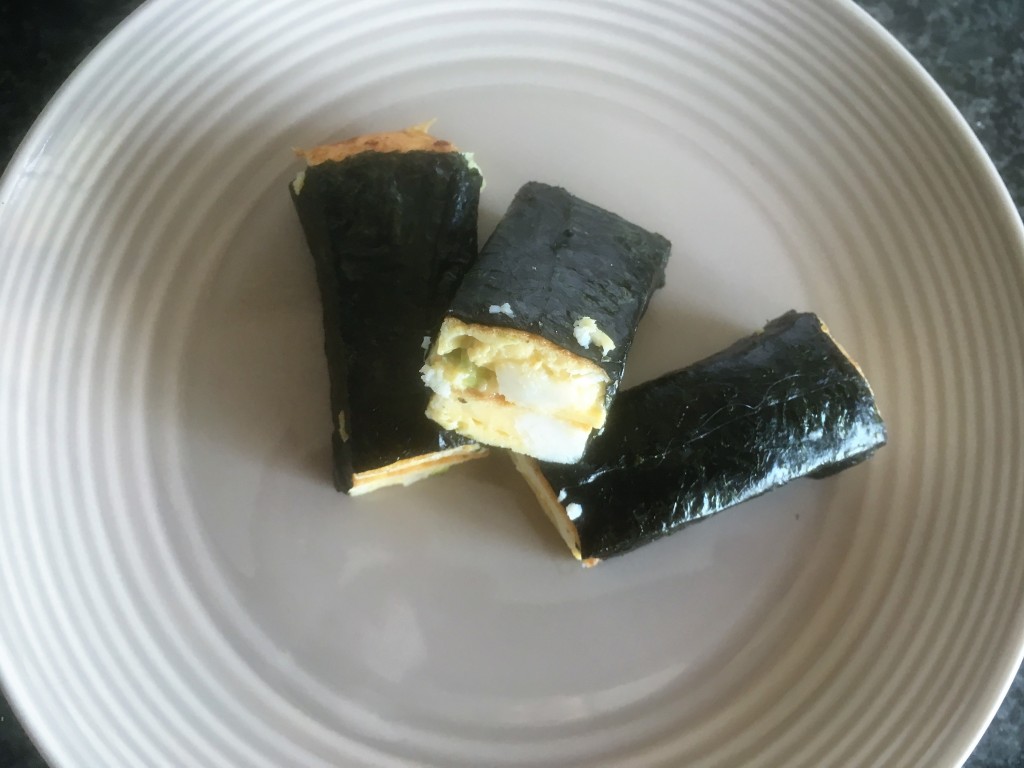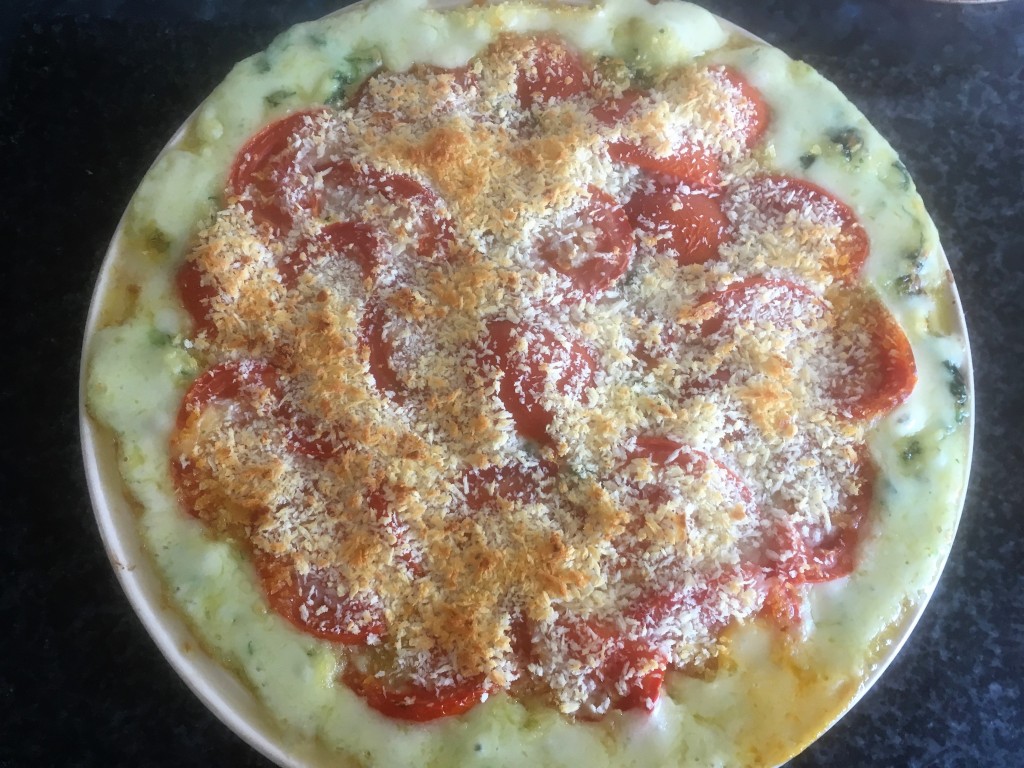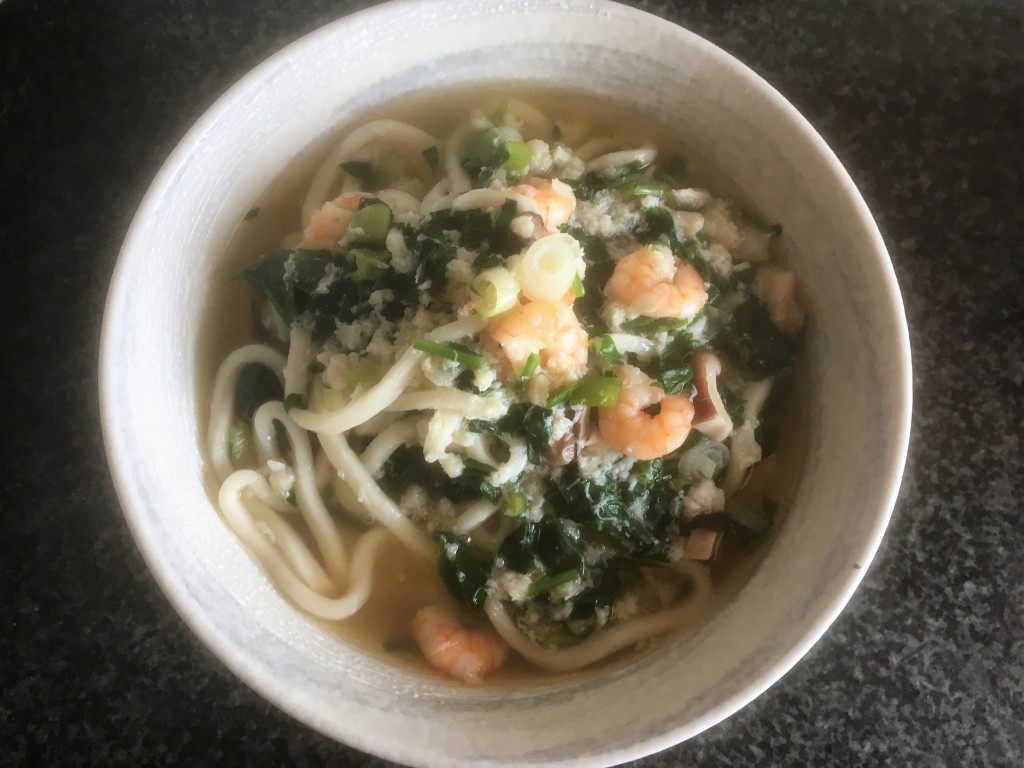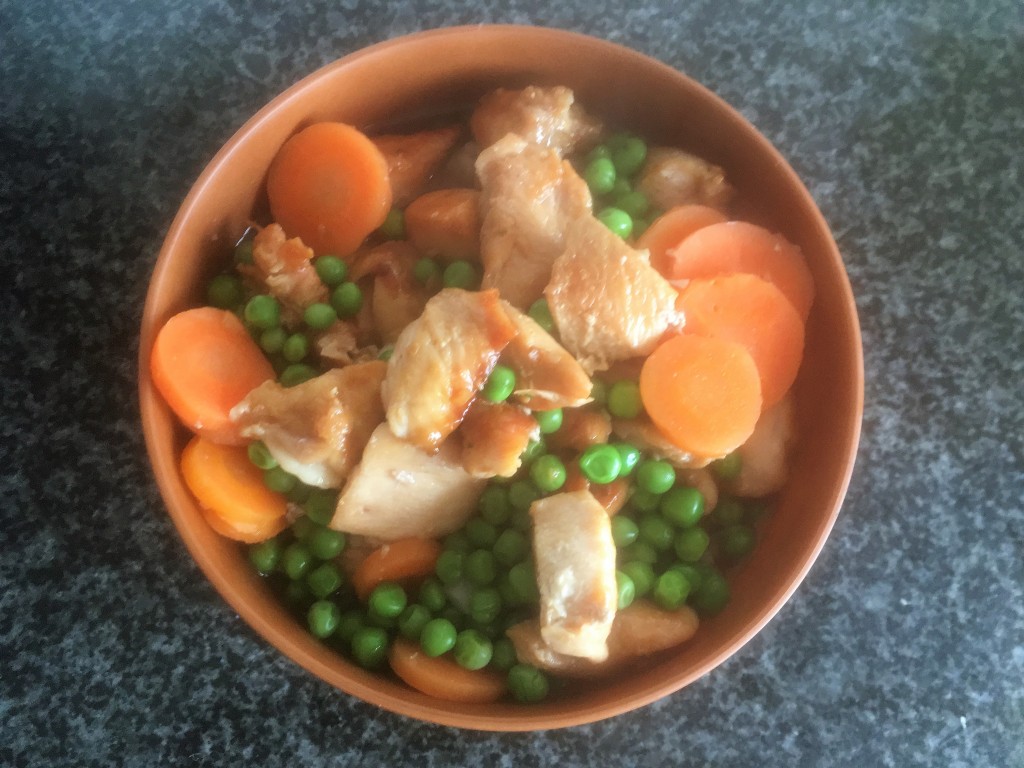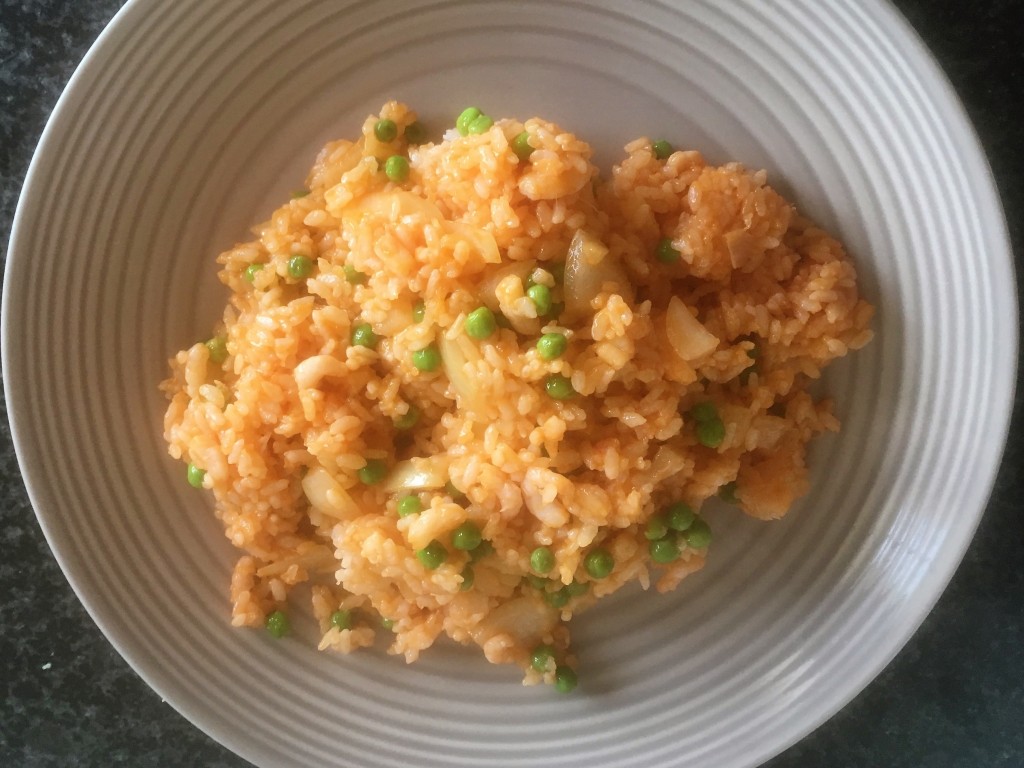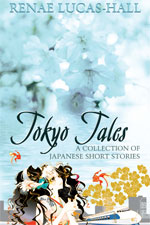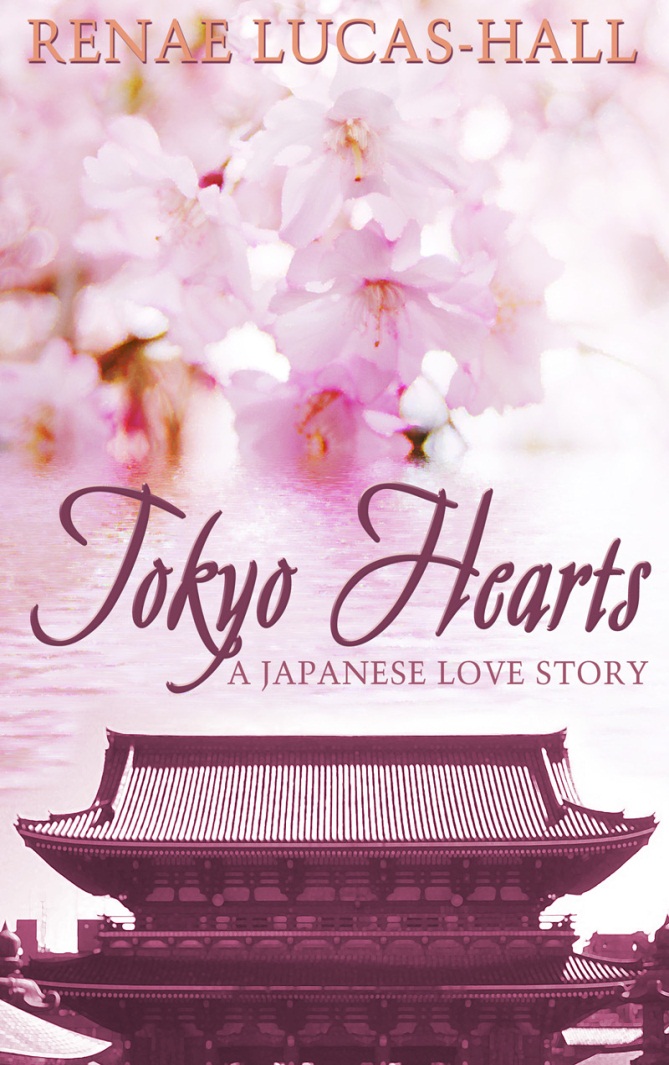I’m not a food critic, a restaurateur, a professional chef nor a food blogger but I love Japanese food and I’ve been experimenting in the kitchen from a very young age so those are my credentials for reviewing this wonderful cookbook.
I’ve purchased several Japanese cookbooks in the past or I’ve printed recipes off the internet but they’re always the same type of popular Japanese recipes and I’ve often thought they were more suited to the type of dishes served up in Japanese restaurants outside of Japan rather than the good old Japanese cooking that grandmothers in Japan lovingly put on the table for their families to enjoy.
Japan: The Cookbook by Nancy Singleton Hachisu is everything I expected and more. Over the past few weeks, I’ve been creating the kind of Japanese dishes I’ve always wanted to make and that’s regional dishes and home-style cooking that have never been translated into English until now. Food you could only expect to eat if you were travelling the length and breadth of Japan, staying with families along the way who really know how to cook healthy, delicious and wholesome Japanese food that’s been passed on from one generation to the next.
This cookbook is substantial. It includes over 400 recipes by Hachisu, you can easily find your favourite recipes because it’s broken into sections dedicated to each style of cooking, and there’s a fascinating section on the history of Japanese food towards the beginning. There are also over 50 recipes by famous chefs in the blue section at the back and several full-page photographs, but the lovely introduction at the very beginning by Nancy Singleton Hachisu is definitely well-worth reading before you start cooking.
In the intro, you’ll discover Hachisu has been living in Japan since 1988 as a Japanese farmer’s wife. Her husband Tadaaki is also an excellent cook but after they married Hachisu became the “resident bride” and enthusiastically took over the task of making tempura and the New Year’s soup. Hachisu has been developing her cooking skills for decades so she’s the perfect person to put a cookbook like this together.
You’ll also discover this author went to a lot of trouble to meet as many grandmothers as possible in her favourite regions in Japan so she could record a great number of recipes for this cookbook and then adapt these recipes to include her own individual twists. It’s this energy and authenticity which makes this cookbook so great. It was also interesting to discover a lot of the recipes in this book came from the writings of Harumi Kawaguchi, a Zen nun and a close friend of Hachisu. This has definitely influenced many of the simpler dishes and I certainly felt a degree of mindfulness when I prepared some of these meals. Although a lot of the dishes are natural, wholesome and modest in their presentation there are also many other dishes that do require some degree of skill in the kitchen and quite a bit of preparation and this includes several dishes that are full of rich ingredients that perfectly complement lighter dishes when served on the table.
I also really liked the way Hachisu shared an interesting fact in her introduction on page 13 about the Japanese “s” row of the phonetic alphabets (hiragana and katakana) and how this applies to cooking in Japan:
“Sa-shi-su-se-so is a mnemonic for the main flavouring ingredients of Japanese cuisine. Sa=sato [sugar or mirin], shi=shio [salt], su=su [vinegar], se=seu the archaic reading of shoyu [soy sauce], and so=miso. These are the only essential ingredients.”
I’ve already made seven meals from this cookbook, including sushi, rice and noodle dishes, and I was so impressed by how well everything turned out. I’ll definitely buy Hachisu’s other cookbook “Japanese Farm Food” in the near future because all these recipes were fabulous.
So, let’s get on to the recipes I’ve been making from this cookbook over the last few weeks. I really hope my review of each recipe will show you just how much my husband Roy and I enjoyed each and every dish.
ROLLED CRAB AND NORI OMELET (page 46)
This looks like a simple dish that’s easy to prepare but it was actually quite difficult for me to make. Reason being, I don’t own the recommended tamagoyaki nabe (Japanese omelette pan) so I had to make do with my small round frying pan and cut the rounded edges off into a square. You have to keep an eye on the egg omelette when you’re making it so you don’t overcook the egg and create brown patches. You want a nice pale yellow colour on all sides. Hachisu recommended six eggs and just 3oz (90g) of crabmeat but I would use quite a bit more crabmeat next time because I think the taste of the egg in this masked the flavour of the crabmeat. It did look really good in the end and you’ll definitely love this nori roll if you’re a big fan of tamago nigiri sushi.
SPINACH GRATIN (page 256)
Roy loved this dish! He really liked the combination of spinach, bacon, scalloped potatoes, béchamel sauce, tomatoes and bread crumbs. I’ve already made it several times and I’m sure I’ll continue to make it again and again in the future. If you’ve never been to Japan you might be wondering why a gratin has been included in a Japanese cookbook but this is actually a very popular dish that is often made at home in modern Japan and it’s also included on menus at a lot of family restaurants. Hachisu says you should make a home-made béchamel sauce and I completely agree with her. It really is a lot better for you and a lot more scrumptious than the store-bought variety. Don’t overcook the bacon because this could easily affect the taste (and not in a good way) and be generous with the panko breadcrumbs.
ONE-POT SEAFOOD UDON (page 277)
“A cross between nabe (one-pot dish) and udon, unusually, this dish is baked in the oven.”
If you’re tired of eating kitsune udon all the time and you’re looking for a really tasty, healthy and low-calorie meal then this seafood udon dish is a great alternative and it only takes 25 minutes to prepare and cook! This recipe certainly has some delicious ingredients — prawns, crabmeat, maitake mushrooms (I used shiitake mushrooms because I couldn’t get the maitake variety), negi, spinach, and udon!
I did cheat a little bit. I used pre-cooked udon noodles, three sachets of udon soup stock powder which made about 1.3 litres of hot noodle broth and canned shredded crabmeat to save myself time and money. I wouldn’t use shredded crabmeat again. Instead, I’d add fresh crabmeat or canned chunks of crabmeat. Hachisu recommends fresh crabmeat, picked over for shells and cartilage.
I boiled the broth on the stove first before adding the noodles. I let them cook for five minutes which allowed the noodles to separate before adding the other ingredients. I cooked this all in my Le Creuset cast iron casserole dish which was perfect for cooking this on the stove and transferring it to the oven. Hachisu recommends adding a splash of ponzu at the end and we really thought the soup needed this. After we’d added this, the meal was absolutely delicious. In fact, Roy liked it so much, he finished all of the leftover soup at the bottom of the pot!
RICE BOWL WITH GROUND BEEF (page 304)
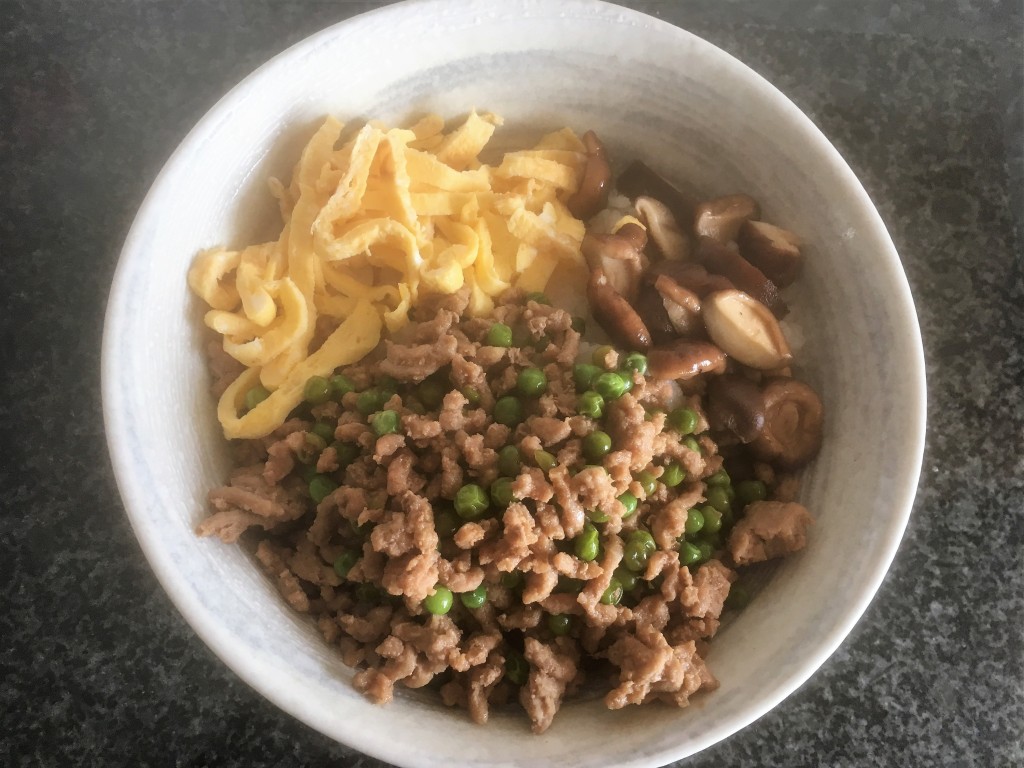
Hachisu recommends leftover rice for this dish as well as ground pork or chicken as well as egg threads, shiitake mushrooms and green beans but as she mentioned in the introduction you could use any leftover vegetables you have in the fridge. I replaced the beans with garden peas. This isn’t the fanciest dish and you certainly wouldn’t serve this to important guests but it’s a quick, easy and cheap meal to make and children would really love the easy-to-eat mince and the way you serve each topping in its own section. I had fun making the egg threads (the recipe for this is on page 222) but I’d definitely cut them finer next time.
GINGER-SOY CHICKEN RICE BOWL (page 314)
This is my favourite dish so far. As you can see in the photo, the chicken had a lovely sticky ginger-soy coating. One great fact about this cookbook is that Hachisu has given you exact quantities for each ingredient to be used in all her recipes and if you follow these instructions to a tee then you can’t go wrong. One exception I made was to add carrots because I had a packet of mixed vegetables in the freezer I wanted to use. If you love soy-glazed yakitori then you’ll love this dish.
SHRIMP AND PEA RICE (page 316)
Hachisu says “A vehicle to use leftovers, hayashi rice is said to have developed in the southern island of Kita Kyushu. The owner of a small casual eatery needed to feed his customers quickly before they boarded the ship, so he put together this flavorful ketchup-based rice dish. While chicken is commonly used in this dish, here the shrimp reflects the seaside roots. Feel free to swap out diced leftover chicken or pork. In the same vein, any chopped vegetables such as carrot, green beans, or turnips can be substituted for the green peas.”
I followed Hachisu’s recipe and used green peas. Again, it might surprise you that Japanese people use quite a bit of ketchup in this dish and in their cooking but I assure you this is another popular dish, especially with children. You’ll really love this dish if you’re a fan of the filling in omurice (a Japanese omelette rice dish).
CRAB AND EGG YOLK RICE BOWL WITH AONORI SALT AND KINOME (A RECIPE BY MARTIN BENN OF SEPIA RESTAURANT IN SYDNEY, AUSTRALIA) (page 407)
I mentioned above there are over 50 recipes from well-known Japanese and Western chefs at the back of the book in the blue section. I decided to make this particular recipe and I’m so glad I did!
Martin Benn is the chef/owner of Sepia Restaurant in Sydney. He started his career in London before relocating to Australia in 1996 where he gained a position at Tetsuya’s under the famous Chef Tetsuya Wakuda. He was made head chef at this restaurant at just 25 years old!
I knew this dish was going to be full on but I still wanted to try it even though I thought it looked a bit risky and I was worried I wouldn’t get it right. I thought, at first, I was setting myself up for a challenge and it might be a bit sickly because it included 14 tablespoons of butter and 16 egg yolks!! Yes, you read that right. That’s a hell of a lot of butter and I thought our cholesterol levels would skyrocket with all those eggs.
Boy, was I wrong about the taste! I can now see why Benn is such a respected and accomplished chef. This dish was an absolute delight to the taste buds. It reminded me of the rich and creamy dishes you pay through the nose for at fine French restaurants. I’d still warn anyone over the age of 65 to go easy on this dish but both my husband and I really enjoyed it and we were able to eat a full bowl each. I didn’t have any kinome sprigs to place on top of the dish at the end as recommended but the aonori salt (a combination of sea salt crystals and powdered green nori) was a great addition.
To be perfectly honest, I wouldn’t serve it as a rice bowl again. I think it’s just too much. I’d serve up just three tablespoons of this next to a pan-fried or poached piece of salmon with some green beans sautéed with a little garlic and grated ginger and a dash of soy sauce and toasted sesame oil.
………………………………….
I’d like to thank Phaidon for sending me a copy of this cookbook and I’d also like to send out a huge thank you to Nancy Singleton Hachisu for putting together this culinary masterpiece.
I’ll definitely be making a lot more recipes from this cookbook in the future and posting photos of these recipes on my favourite social media platform Twitter so please follow me @RenaeLucasHall for these updates.
Japan: The Cookbook by Nancy Singleton Hachisu
470 pp, Phaidon. £29.95.
Get your copy on Amazon.co.uk and Amazon.com.








